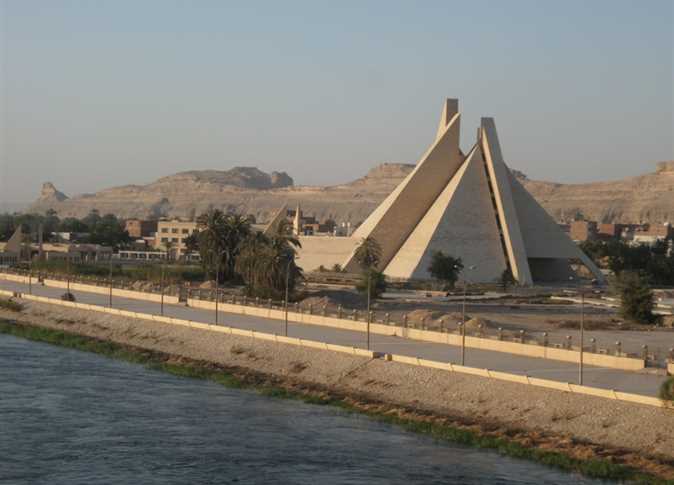For several decades, Egypt has lived under an authoritarian political regime whose roots date back to the 1952 revolution, when a group of army officers–who came to be called the Free Officers–overthrew the quasi-liberal monarchy that had ruled Egypt for 30 years. Using popular nationalist slogans demanding full independence, the evacuation of British occupying forces from the Suez Canal and the reclamation of Palestine after the establishment of the State Israel in May 1948, the Free Officers proceeded to erect an autocracy based on individual rule.
Nasser’s authoritarian regime
The revolutionary government of Gamal Abdel Nasser cast aside the liberal constitution of 1923 and went on to draft another constitution in 1956 to legitimize the new regime. It banned political parties, restricted professional syndicates and brought labor unions under its complete control after executing two labor leaders in the first year of the revolution. It also reigned in the media, nationalizing the press in 1961, and placed tight restrictions on NGOs until 1964 when a law was passed that officially brought them under state control.
During this time, the regime placed immense pressure on judges, who drew on a liberal legacy grounded in Egyptian legal thought. The regime introduced arbitrary changes to the judicial system and established a parallel legal system of exceptional military and quasi-military courts to prosecute its political opponents. This pressure came to a head in 1954 and 1968, in two incidents known as “the massacre of the judiciary,” when many judges who had rejected political interference were dismissed. Academic freedom also fell victim to the new regime, which fired university professors who were considered intellectual opponents and censored university curricula.
The massive military defeat of Egypt by the Israeli army in June 1967 had a tremendous impact on the cohesion of the regime, which had based its political legitimacy on its confrontation with Israel and the West; the army, the foundation of the regime’s authority and its main tool of repression, was defeated. Protests were seen in the streets for the first time since 1954, and political criticism which had been largely confined to allegorical literary works was expressed publicly.
Sadat’s strategic opening
After Nasser’s death in 1970, the government was weakened by a power struggle within the ruling elite. Egypt’s victory over Israel in the October War three years later did not completely alleviate the political trauma of the 1967 defeat. This led the new ruler, Anwar Sadat, to institute a limited degree of political pluralism in order to reinvigorate public support for the government.
In 1977, the government enacted a law permitting the establishment of three new parties representing different positions across the political specturm: the Egyptian Arab Socialist Party, the Progressive National Unionist Party and the Liberal Party. The following year two more parties were approved, the Socialist Labour Party and the New Wafd, a reincarnation of Egypt’s biggest nationalist party which was dismantled after the 1952 revolution..
Each opposition party began to issue its own newspaper. Professional syndicates were revived, especially the Lawyers’ Syndicate which was transformed into a pulpit for the opposition. Egyptian human rights organizations were established and a new, less autocratic constitution replaced the existing one. Torture of political opponents, which had evolved into a routine, systematic practice under Nasser, declined.
The objective behind these reforms was to restore the political legitimacy of the regime, which it had lost after 1967. But these few openings were also enough to let in political winds that had been gathering for two decades. Repressed political tendencies drew extra momentum from the huge legitimacy deficit that the regime suffered after the defeat at the hands of Israel.
Armed violence was soon taken up by Islamist groups. Sadat, a Nobel Peace Prize Laureate, paid the price when he was assassinated on 6 October 1981, while celebrating the anniversary of Egypt’s 1973 victory. The bullets that killed him literally carried several messages, the most significant one being that his victory against Israel did not erase the political effects of 1967. The regime could not regain its political legitimacy by winning another war or by haphazard attempts to repair its tattered image. Rather, an entirely new political system was needed to restore public confidence in the state. This is what Sadat did not realize and what President Hosni Mubarak has fiercely resisted since assuming power.
The resistance to democratization did not begin with Mubarak. It began four years before Sadat’s assassination, when the former president gradually began to retreat from his political liberalization program by launching an assault–using legislation, the media and the security apparatus–on the very forces he had helped unleash. The food riots of 1977 were followed by new laws granting the government exceptional powers, arrest campaigns targeting political activists, the banning of the leftist El-Ahali (the most active partisan newspaper) and the dismissal of opposition members from parliament. Direct support was also given to political Islamist forces as a means of countering the left, including support for physical attacks on leftist activists on university campuses.
Sadat then amended the constitution. To appease the Islamists he recognized the principles of Islamic law as the main source of legislation, while at the same time removing the two-term limit on the presidency. This seemed to be a mutually beneficial deal: Sadat granted the Islamists strategic legitimacy based in the constitution in exchange for securing an undefined presidential term. But some Islamists would abrogate this agreement a year later by assassinating the president.
Mubarak: Preserving the status quo
President Mubarak did not inaugurate his tenure with repression. He initially eased political pressures that had built up in the final years of Sadat’s reign. He released hundreds of opposition figures who were arrested by the former president a few months before his assassination and widened the margin of freedom given to opposition parties and their newspapers. It was during this period, in 1985, that the Egyptian Organization for Human Rights (EOHR) was established, after three organizations founded earlier during Sadat’s rule had died or foundered. Other associations followed in the wake of the EOHR.
Professional syndicates grew increasingly active, but so did the influence of the Muslim Brotherhood, which assumed control of most syndicates by the late 1980s. At the same time, terrorist violence expanded into a wider social confrontation, particularly after the security establishment was authorized to deal with terrorism using new techniques, including assassinations and fatal torture.
The second moment of political openness in the Mubarak era came in 2004/2005 after intense international pressure to undertake political reform. The right to demonstrate freely was granted on several occasions, independent political newspapers were permitted to operate and activist political groups without legal licenses were tolerated, Kefaya (The Movement for Change) being the most prominent one. A constitutional amendment was passed that replaced the presidential referendum with multi-candidate elections, which but which still included many restrictions on who could participate.
With the exception of these two periods, Mubarak’s rule has been characterized by widespread repression carried out using diverse tools, including the constitution, law-making, the security apparatus, the media, the official religious establishment, military tribunals, and exceptional and non-exceptional courts. A state of emergency has been in effect throughout Mubarak’s 29-year rule and the use of torture against both political opponents and ordinary civilians has expanded, as has the use of brutal violence to repress social and political protest. The role of the internal security apparatus has increased and it is now the primary body that manages the country’s daily affairs. This stands in contrast to Nasser’s era when military intelligence was the main tool of repression.
*This article consists of revised excerpts from the author’s chapter in Islam and Human Rights,edited by Hatem Elliesie. It is the first in a two-part series on political freedom and human rights in Egypt since the 1952 revolution.
Bahey el-din Hassan is the director of the Cairo Institute for Human Rights Studies.




